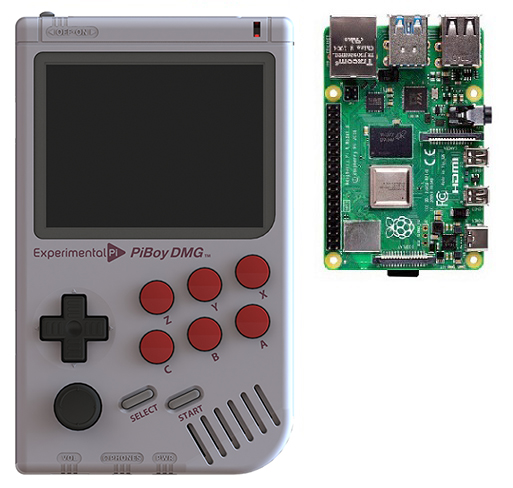
Figure 1: .
Why use a Raspberry Pi for Emulation?
The Raspberry Pi, which is at the core of the PiBoy DMG, is one of, is not the most popular choices for emulating gaming systems. Below you’ll find a list and discussion of why we chose the Raspberry Pi for the PiBoy, and why many people prefer the Raspberry Pi for emulation.
Selection of Available Emulators
When compared to other single board computer systems the Raspberry Pi supports that widest selection of emulators of any hardware on the market. The Pi is well documented and supported, which makes it easy to develop for and port emulators to.
Selection of Available Operating Systems
The Raspberry Pi supports the widest range of operating systems and emulations suites. The Raspbian-based RetroPie features first class support on the Pi and is the one of the most popular choices for the Raspberry Pi. There are also several other systems such as Lakka and Recalbox that are well supported on the Raspberry Pi. The options allow you to choose the systems that has the features and functionality you prefer for your emulation experience.
Overclocking and Performance Options
The Raspberry Pi is one of the most powerful single board computers available on the market. In addition to the performance it provides out of the box the Pi can be overclocked. Both the CPU and GPU of the Pi can be significantly overclocked to provide better emulation performance. With the addition of a heatsink and fan this overclocking can be taken even further. See this article to learn how to overclock the Pi in the PiBoy. We have an overclocking hardware kit in the development phase for the PiBoy DMG, see this article for a sneak peek.
Community
One of the biggest benefits of the Raspberry Pi platform is the community around the hardware itself and the software used with it. With the Raspberry Pi being the most popular single board computer on the market there is support available in the form of offical documentation, online forums, youtube tutorials and books. The same is true of the software used on the Pi: can can find solutions to just about any problems as well as inspiration for projects due to the volume of instructional material online.
Peripheral Support
Since the Raspberry Pi is well documented and supported it is compatible with a large amount of peripheral hardware. For gaming this means that controllers, joysticks, mice, keyboards and upgradeable hardware such as screen is well supported out of the box. This flexiblity is what allowed us to choose excellent gameplay hardware when developing the PiBoy DMG.
Customizable
The Raspberry Pi was developed as a flexible learning platform for both software and hardware development. This means the Pi is a great platform for trying out new ideas, both in software and hardware, based on things you’d like to make a reality. One of the design goals for the PiBoy DMG was to develop a gaming handheld that could be used as-in or as a base for customization. Our colored shells are an easy way to start down this path.
Open Source
Both the hardware and software stack of the Raspberry Pi, with a few exceptions, are open source, which means you can use them to learn about computer hardware and software development. It’s a system and philosophy designed to give you the freedom to tinker and learn. Many of today’s computer systems don’t allow you to pull back the layers to learn how the system works, let alone expand on it. To further this goal of openness we plan to open source the majority of the custom software used in the PiBoy DMG.
Article last updated on: 08 Mar 2021
